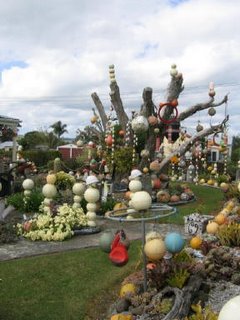 If it's a common stereotype that JAFAs lump together and ignore the majority of New Zealand south of the Bombay Hills, then it is just as common that Northland is rendered invisible to the rest of New Zealand by the tall buildings and glaring lights of the big city taking up the entire isthmus connecting Northland to the rest of the country. In case you'd forgotten, Northland is that long skinny stretch of land, like the nose of a swordfish of the tail of a sting ray sticking out above Auckland. It's impossible to be more than 40km from either coast, and there's a lot of coast wrapped around the region.
If it's a common stereotype that JAFAs lump together and ignore the majority of New Zealand south of the Bombay Hills, then it is just as common that Northland is rendered invisible to the rest of New Zealand by the tall buildings and glaring lights of the big city taking up the entire isthmus connecting Northland to the rest of the country. In case you'd forgotten, Northland is that long skinny stretch of land, like the nose of a swordfish of the tail of a sting ray sticking out above Auckland. It's impossible to be more than 40km from either coast, and there's a lot of coast wrapped around the region.Whangarei sits on an East Coast harbour and is overwhelmingly focused eastward. But last week I was housesitting to the west, a third of the way along the road to Kaipara on the West Coast so it seemed like a good excuse to check it out.
The highlight of our day out west was stopping in the tiny village of Te Kopuru where Al had preached during his days at Theological College. The church was long gone but the main street was still lined with charmingly unrenovated houses and eccentrically unlandscaped gardens. This particular garden made spectacular use of buoys and other beachcombings. Other gardens featured hubcaps and painted tires. All had meticulously groomed lawns.

We liked the beach at Glinks Gully but not the more famous Bayley's Beach which had all the charm of a filthy parking lot, complete with jeep full of young men burning circles on the sand. We liked Dargeville: Al for the old clocks powered by solar panels, and me for the very nice sage suede shoes I found on sale in an independent shoe shop. It might just have been the long awaited sunshine but I got a good feeling about the town which seemed lively and friendly.
I'd been to Dargeville once before to visit the Zinzania Paper Factory where handmade paper is created from the rice grass chocking the local waterways. The rice grass arrived in the form of clay bricks from China used as ballast by ships arriving to collect kauri back in the day when cutting down old growth forest was still a growth industry. The clay bricks were dumped in the river and the seeds in the rice grass straw germinated with enthusiasm in the warm moist conditions of Kaipara. A hundred years later, after the dairy factory closed down, some locals decided to use the souvenirs of past economies to try and develop a contemporary craft and tourist attraction. Their paper is excessively lovely but, like all handmade paper made in the West, terrifically expensive. Only diehard book and paper fans like me are likely to make a special trip to Dargeville to visit see paper making, and there's not much else to attract tourists to town. So, I'm not sure how the business is holding up.
*Huge grin* Love that garden! How interesting about the paper made from the rice grass - what a fantastic way to make something useful and beautiful from what could be a eco-pest. And how interesting how it got to be there.... thanks for all of that!
ReplyDelete